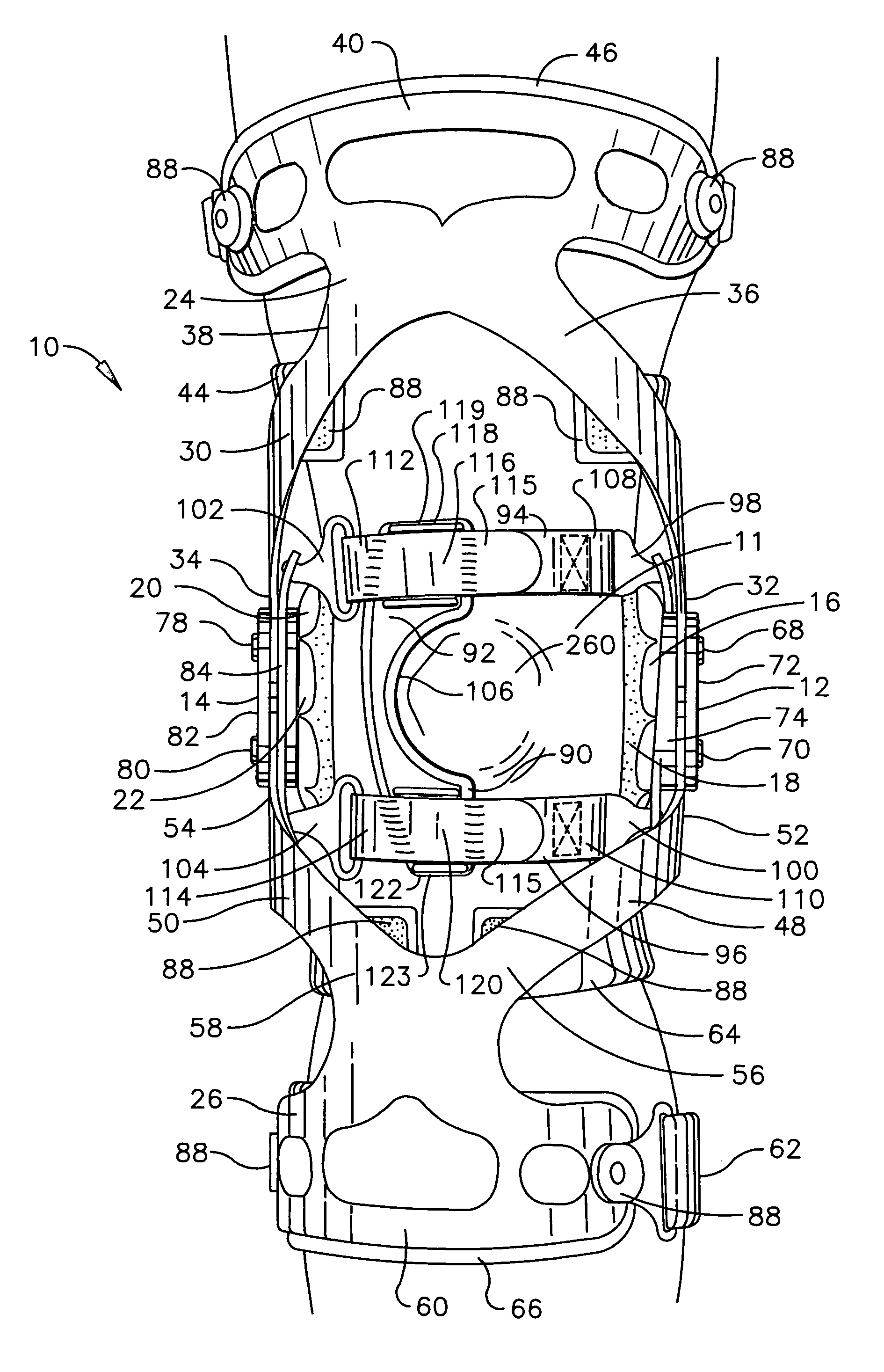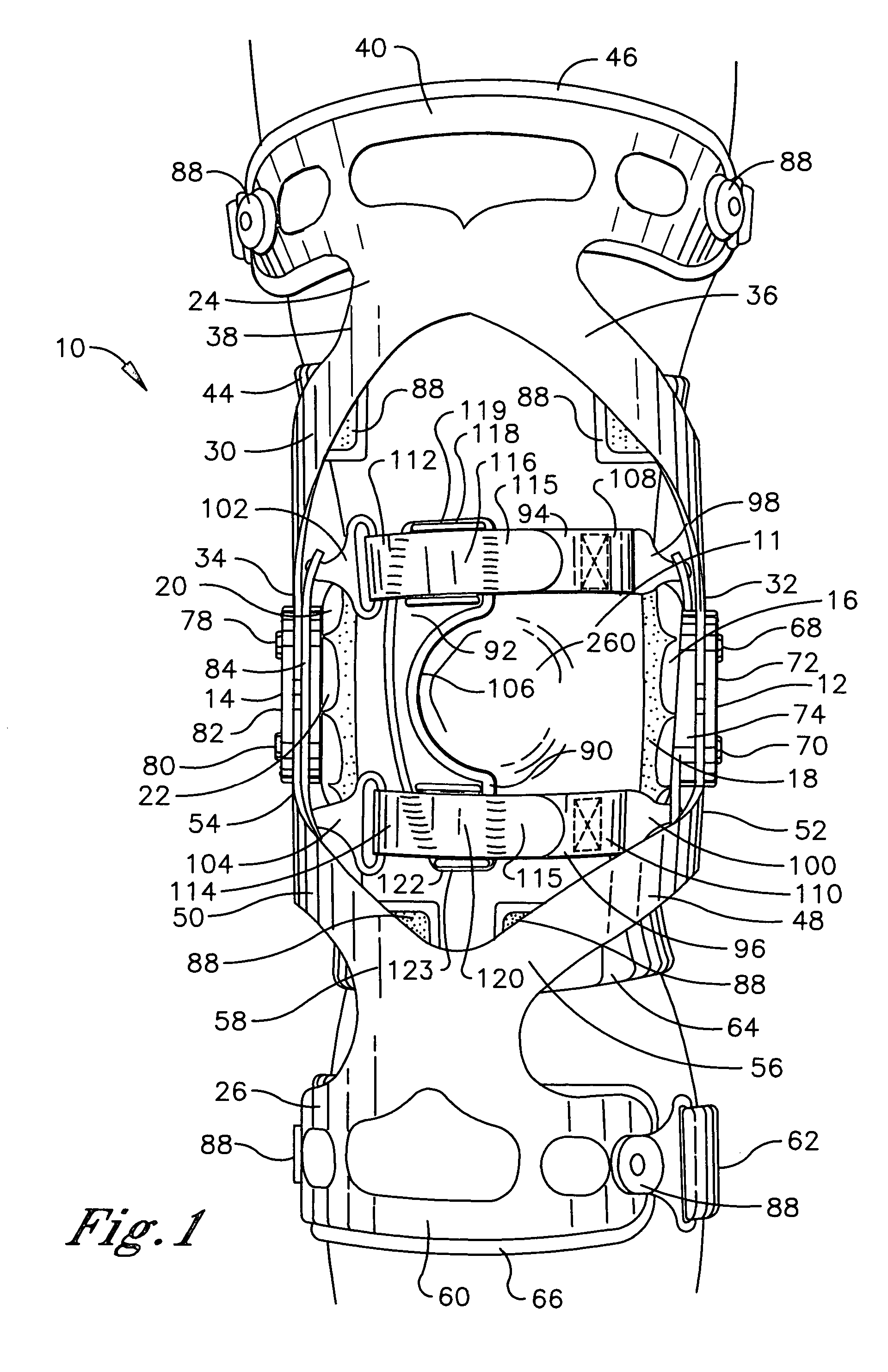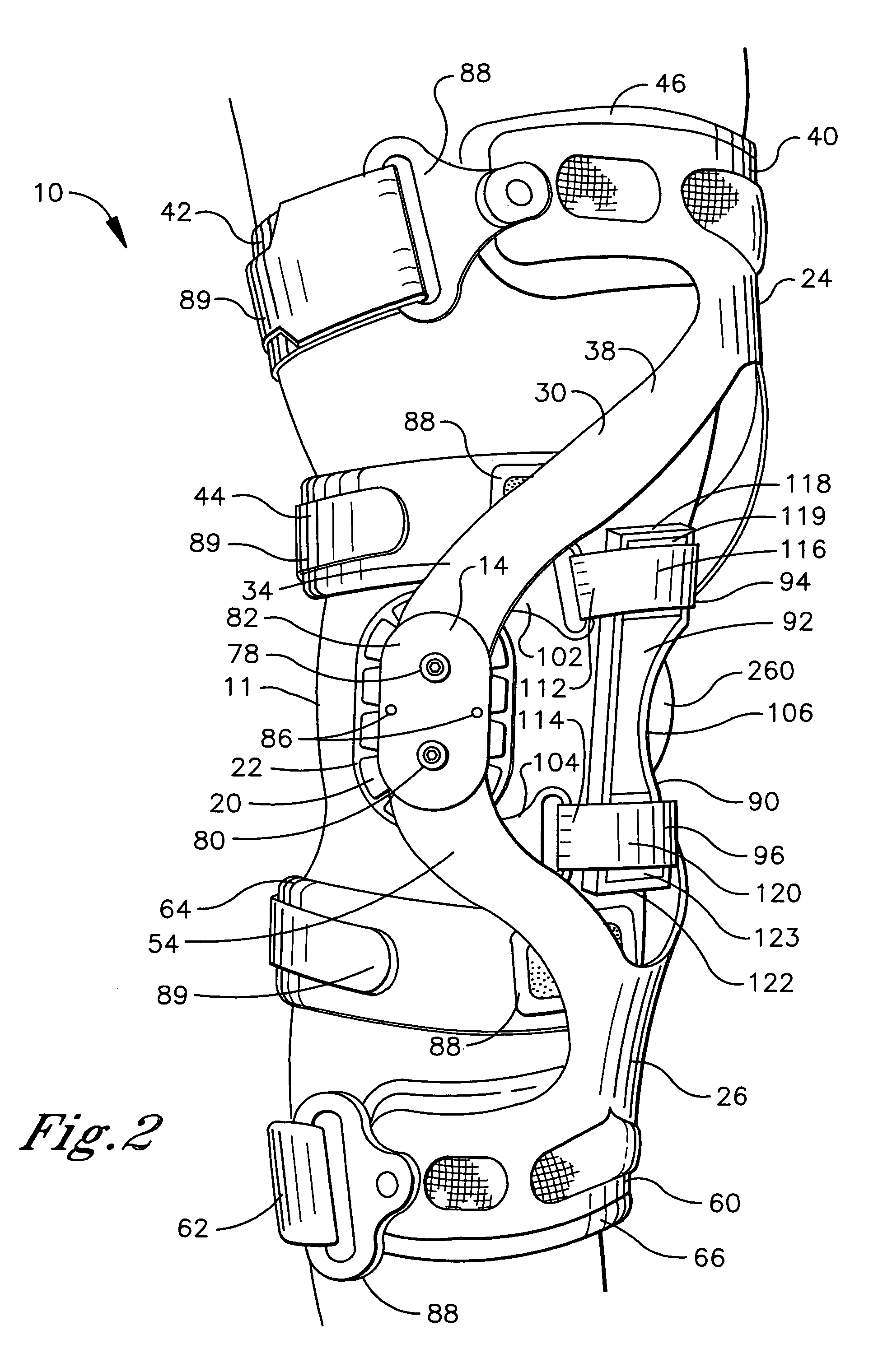Knee brace providing dynamic tracking of the patello-femoral joint
a dynamic tracking and knee brace technology, applied in the field of knee braces, can solve the problems of subluxation or dislocation of the joint, subluxation or dislocation of the patella due to patellar tracking errors having the greatest risk of occurring, and high undesirable functional disorders of the patello-femoral joint, so as to increase the tension force, reduce the tension force, and increase the tension force
- Summary
- Abstract
- Description
- Claims
- Application Information
AI Technical Summary
Benefits of technology
Problems solved by technology
Method used
Image
Examples
Embodiment Construction
[0020]Referring initially to FIGS. 1–4, a knee brace of the present invention generally designated 10 is shown operatively positioned about the knee joint 11 of a user. For purposes of illustration, the knee brace 10 is configured for mounting on the right leg, but it is understood that the skilled artisan can readily adapt the knee brace 10 for mounting on the opposite leg in accordance with the instant teaching. The positional terms “upper” and “lower” are used hereafter to define the vertical position of an element relative to the knee joint 11. The positional terms “medial” and “lateral” and “anterior” and “posterior” are used hereafter to define the horizontal position of an element relative to the vertical longitudinal axis of the body.
[0021]The knee brace 10 comprises a first hinge assembly 12 and a second hinge assembly 14. A first condyle engagement assembly comprising a first condyle cup 16 and a first condyle pad 18 is associated with the first hinge assembly 12. A second...
PUM
 Login to View More
Login to View More Abstract
Description
Claims
Application Information
 Login to View More
Login to View More - R&D
- Intellectual Property
- Life Sciences
- Materials
- Tech Scout
- Unparalleled Data Quality
- Higher Quality Content
- 60% Fewer Hallucinations
Browse by: Latest US Patents, China's latest patents, Technical Efficacy Thesaurus, Application Domain, Technology Topic, Popular Technical Reports.
© 2025 PatSnap. All rights reserved.Legal|Privacy policy|Modern Slavery Act Transparency Statement|Sitemap|About US| Contact US: help@patsnap.com



